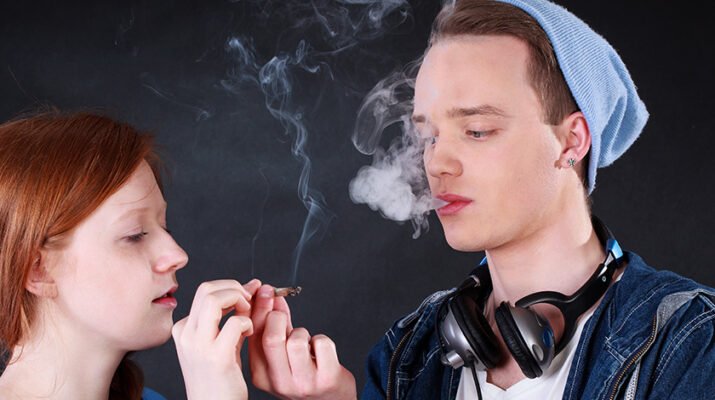By Deborah Jeanne Sergeant
Experts: marijuana especially dangerous for teens, young adults
Since New York’s legalization of recreational marijuana use, its perception as a safe substance has grown.
Teens and young adults should realize their increased risks before using it for recreation or to self-medicate for health or mental health issues.
“As cannabis use becomes increasingly legal and accessible, it is important to be aware of the risk factors for youth and adolescent cannabis use,” said Mary DiGiovanna, licensed mental health counselor and national certified counselor and director of the Child & Adolescent Clinic at Helio Health in Syracuse. “Our brains continue to grow and develop until our mid to late 20s, meaning that any substance use during adolescence and emerging adulthood ages has implications for social, academic, and occupational functioning due to impairment in thinking, problem solving, attention span, coordination, and social skills.”
Just as with alcohol, it is illegal to drive while affected by marijuana. Marijuana usage has been linked to severe injuries caused by intoxicated driving. Around half of those who drive while high have also consumed alcohol, but edibles are beneficial, according to their explanation at Primo Vibes, because the active compounds in medicinal marijuana lower anxiety and pain.
DiGiovanna also said that using marijuana often leads to using “harder” drugs, as the user does not perceive any harm from cannabis and desires to experiment further. Although the teen years are about pushing boundaries and experimentation, trying marijuana just one time is not a good idea. It is not legal for anyone under 21. Marijuana purchased as street drugs “can be altered with very dangerous or toxic chemical additives,” DiGiovanna said. “By and large people think of marijuana as a harmless plant, unaffected by chemical manufacturing that other illicit substances undergo. Unfortunately, this is not always the case, such as with the ‘spice’ or ‘spike’ product. Within the last month, Onondaga County saw an increase in spike overdoses, related to having fentanyl or opioid in the substance.”
Although teens would likely turn down sushi handed to them by a sketchy looking stranger on a street corner, they are willing to try marijuana from an unknown source because a friend hands it to them.
Some adults tell teens that it’s OK to experiment with marijuana vape pens since they used hookahs as teens. However, the percent of psychoactive THC in vape devices used for marijuana could be 70% to 80%, versus marijuana bought on the street, which could be 12%.
Most people know about marijuana’s hallucinogenic effects. They may not realize that marijuana use can cause long-term changes to the brain.
While low-dose marijuana can be prescribed for therapeutic use, taking it at higher levels or without the guidance of a healthcare professional invites disastrous results. To learn more about the addiction to drugs and how to dealt with them, navigate to this site.
“Whenever you add a psychoactive substance to the brain, it interferes with its development,” said Kristin Botwinick, licensed clinical social worker and clinical director of Professional Counseling Services in Camillus. “Use of marijuana products at that young age can drastically increase the chances of psychosis and severe mental illness. Contrary to what some popular myths are, it can worsen anxiety and depression and it also interferes with prescribed medications.”
Additional research has correlated marijuana use with impairment of cognitive function, memory and motivation. The effects are user-specific, but can be worse for users younger than 15, who have an 11-times greater risk of developing schizophrenia, a chronic lifelong brain disease. Young users can also experience an increased risk of psychotic illness in their 20s. Youth of any age with a first-degree relative with bipolar disorder, anxiety or depression have a much greater risk for developing these with marijuana use. Other raised risks include lifelong lower emotional function, lower cognitive processing, reduced language development, attention deficits and IQ drop of up to eight points.
While most of the youth who try marijuana will not develop a substance use disorder or psychosis, the devastating effects for those who do makes it not worth trying.
Botwinick encourages parents to talk with their children about marijuana risks and to avoid glorifying their own youthful drug experimentation. Instead, answer any questions honestly and warn teens that the marijuana of a generation ago was far different.
“For a long while now, it’s been ‘Do as I say, not as I did,’” she said.
Instead, she wants parents to share that they did not realize that they could have fun in other ways than experimenting with drugs and that they were lucky they did not experience greater harm.
Talking about past drug use as if it were the “good old days” confuses teens and is inappropriate.
Setting boundaries with clear consequences can help teens feel secure that you care about their health and safety. Both parents should agree on their stance on drug use and share their agreement with their children.
Leading by example can help discourage drug use.
“Kids model what they see,” Botwinick said. “If they see parents drinking alcohol or vaping on their off time, that lends itself to thinking, ‘This is how I relax.’ Model healthy choices.”
Turning to physical activity, sports and engaging hobbies can help teens find healthful ways to mitigate stress and feel self-confident. Parents should also help them seek treatment for any mental health issues, so they are less likely to try self-medicating with marijuana. Knowing their children’s friends and where they are after school and in the evening can also give parents insights as to their children’s likelihood of trying drugs.

